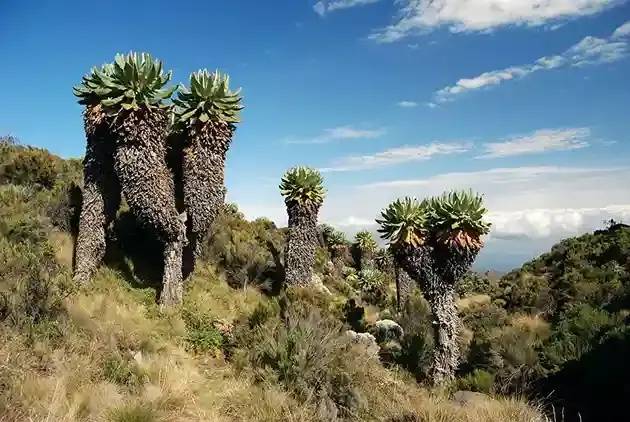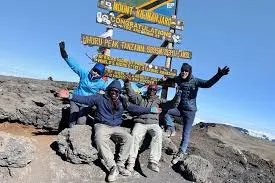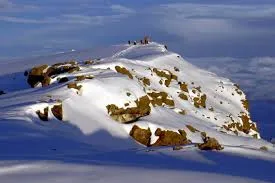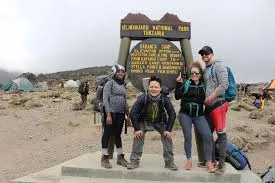Most Scenic Kilimanjaro Routes for Photographers
For photographers, the most scenic Kilimanjaro routes are the Machame, Lemosho, and Rongai trails. Machame offers dramatic landscapes and varied vegetation, Lemosho provides wide, panoramic views perfect for sunrise shots, and Rongai’s northern approach gives quieter paths with stunning vistas. Pack your camera and be ready for early-morning light it makes all the difference. This is a comprehensive guide to the most scenic Kilimanjaro routes, designed to help you choose the ideal path for your 6–9 day climb with Capable Africa Tours.
Plan Your Photography Trek Now
Why Kilimanjaro is a Photographer’s Paradise
Kilimanjaro offers breathtaking photo opportunities, from golden sunrises over snow-capped peaks to lush forests teeming with wildlife. Capture the dramatic landscapes along different routes, including volcanic rock formations, alpine meadows, and the stunning glaciers near the summit. Take advantage of early mornings and late afternoons for the best natural lighting, and bring a tripod for long exposures or low-light shots. Below, we explore the most scenic Kilimanjaro routes for photographers, their highlights, and tips to capture their beauty.
Detailed Guide to Scenic Routes
1. Lemosho Route: The Ultimate Scenic Journey
The Lemosho Route (7–8 days) is a favorite among photographers for its diverse landscapes. Starting in lush rainforests, it ascends to the vast Shira Plateau, offering sweeping views of Kibo Peak. The dramatic Barranco Wall and glacier views near Uhuru Peak provide striking compositions. Capable Africa Tours recommends this route for its low crowds and ample photography stops.
- Key Photo Spots: Shira Plateau (golden hour), Barranco Wall (vertical drama), Uhuru Peak glaciers.
- Distance: 70 km (43 miles).
- Elevation Gain: ~4,500m (14,760 ft).
- Best Season: January–March, June–October for clear skies.
2. Machame Route: Dramatic Vistas and Sunrises
Known as the “Whiskey Route,” the Machame Route (6–7 days) offers vibrant rainforests, the iconic Lava Tower, and stunning sunrise views from Stella Point. Its varied terrain and high summit success rate (85%) make it a top choice. Capable Africa Tours ensures extra time for sunrise shots at the summit.
- Key Photo Spots: Lava Tower (rock formations), Stella Point (sunrise), rainforest trails.
- Distance: 62 km (38 miles).
- Elevation Gain: ~4,100m (13,450 ft).
- Best Season: June–October for vibrant colors.
3. Rongai Route: Northern Serenity
The Rongai Route (6–7 days) approaches from the north, offering quieter trails and unique savanna views. Photographers love the dramatic Mawenzi Peak and open landscapes. Capable Africa Tours highlights its suitability for wildlife shots, like colobus monkeys in lower zones.
- Key Photo Spots: Mawenzi Peak (jagged silhouette), northern savanna, Kibo at sunrise.
- Distance: 73 km (45 miles).
- Elevation Gain: ~4,000m (13,120 ft).
- Best Season: January–March for clear northern views.
4. Marangu Route: Classic but Less Scenic
The Marangu Route (5–6 days), or “Coca-Cola Route,” is less scenic but offers rainforest views and comfortable huts. It’s ideal for beginners but lacks the diversity of Lemosho or Machame. Capable Africa Tours suggests it for those prioritizing comfort over photography.
- Key Photo Spots: Mandara Huts (rainforest), saddle views.
- Distance: 72 km (45 miles).
- Elevation Gain: ~4,200m (13,780 ft).
- Best Season: June–October for clearer trails.
Photography Tips for Kilimanjaro
To capture Kilimanjaro’s beauty, start with the basics: use a sturdy tripod for sunrise and sunset shots, pack extra batteries (cold drains them fast), and shoot in RAW for flexibility. Play with perspectives—foreground rocks or flowers add depth—and don’t forget wide-angle lenses for sweeping landscapes. Finally, pace yourself: the mountain is stunning, but altitude affects energy, so pick your moments wisely. Here are expert tips to maximize your shots:
- Gear Essentials: Use a lightweight DSLR or mirrorless camera (e.g., Sony A7C), wide-angle (16–35mm) for landscapes, and telephoto (70–200mm) for wildlife or distant peaks. Pack extra batteries and a tripod.
- Protect Your Gear: Use a waterproof camera bag and silica gel packets to combat moisture in rainforests or summit snow.
- Golden Hour Shots: Plan for sunrise/sunset shots, especially on Machame (Stella Point) or Lemosho (Shira Plateau).
- Lightweight Packing: Limit gear to 3–5 kg; porters from Capable Africa Tours can carry heavier equipment.
- Filters and Lenses: Use UV filters to protect lenses and polarizers for vibrant colors in high-altitude light.
- Backup Storage: Carry multiple SD cards (64GB+) and a portable SSD for daily backups.
Gear Guide
| Item | Quantity | Weight (Approx.) | Purpose |
|---|---|---|---|
| Mirrorless Camera | 1 | 500–700g | Main photography tool |
| Wide-Angle Lens | 1 | 400–600g | Landscape shots |
| Telephoto Lens | 1 | 600–800g | Wildlife, distant peaks |
| Tripod | 1 | 1–1.5kg | Stable long-exposure shots |
| Extra Batteries | 2–3 | 50–100g each | Power in cold conditions |
Visualize Kilimanjaro’s Scenic Beauty
Watch this video to see how Capable Africa Tours helps photographers capture Kilimanjaro’s stunning landscapes on the Lemosho and Machame routes.
Best Seasons for Kilimanjaro Photography
The best seasons for Kilimanjaro photography are January to March and June to October. During these months, the skies are mostly clear, giving you crisp views of the mountain and vibrant landscapes perfect for capturing those stunning sunrise and sunset shots. Capable Africa Tours recommends the dry seasons for optimal conditions:
- January–March: Warm, clear skies with lush greenery in lower zones. Ideal for rainforest and summit shots.
- June–October: Cooler, dry weather with crisp views of Kibo and Mawenzi Peaks. Best for glacier and sunrise photography.
- Avoid April–May: Heavy rains reduce visibility and make trails muddy, challenging for photography.
Ready to Capture Kilimanjaro’s Beauty?
Join Capable Africa Tours for a photography-focused Kilimanjaro trek on the most scenic routes. Our expert guides, tailored itineraries, and porter support ensure you capture stunning shots while summiting safely.
- 98% summit success rate with experienced guides
- Photography stops at prime locations
- Porter support for camera gear
- Eco-friendly treks supporting local communities
- All-inclusive packages with meals and transfers
Limited photography trek spots available—book now to secure your Kilimanjaro adventure!
Plan Your Trek Now


